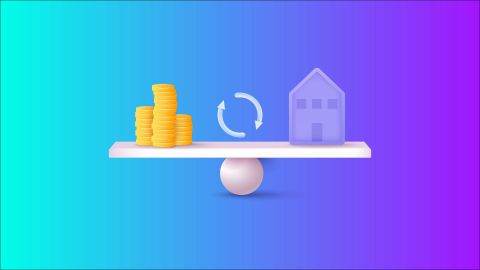In the context of home loans, the Memorandum of Deposit is a legal document that serves as a record of the security pledged by the borrower to the lender. This security typically takes the form of the property being financed by the home loan. The MOD is created to formalise and document the collateral provided, establishing a clear legal record of the transaction. Read on to understand more about the MoD charges, regulations, standards, and implications that home loan borrowers need to understand when managing their home loan finances.
What is MOD in home loan?
A Memorandum of Deposit (MOD) in home loans is an agreement executed by a borrower in favour of the lending institution. The MOD acknowledges that the property being purchased or constructed with the borrowed funds is being held as security for the loan. This document is usually submitted to the local registrar to create a mortgage deed or equitable mortgage, which essentially means the ownership of the property is transferred to the lender until the loan is fully repaid. Any subsequent dealing with the property requires a No Objection Certificate (NOC) from the lender. The MOD offers legal protection to the lender in case of default by the borrower.
Understanding MoD charges
Memorandum of deposit
MoD charges are associated with the creation of a Memorandum of Deposit, which serves as a record of the security pledged by the borrower to the lender. This security is often in the form of property collateral against the home loan.
Implications for borrowers
- Collateral protection: Exploring how MoD charges help protect the lender's interest by creating a legal record of the collateral deposited.
- Security documentation: Understanding the role of the MoD in formalising the security documentation process in home loan transactions.
Regulatory framework
RBI guidelines on MoD charges
- Transparent disclosures: Examining how the Reserve Bank of India (RBI) mandates transparent disclosures regarding MoD charges, ensuring borrowers are fully informed about the financial implications.
- Compliance standards: Assessing the regulatory standards set by the RBI to govern MoD charges and protect the interests of borrowers.
Market practices and variability
Different approaches among lenders
- Variations in MoD charges: Analysing how different lenders may have varied approaches to MoD charges, potentially affecting the overall cost for borrowers.
- Negotiation possibilities: Discussing whether borrowers have room for negotiation regarding MoD charges with lenders.
Economic conditions and MoD charges
- Interest rate impacts: Evaluating how fluctuations in interest rates may influence MoD charges and the broader economic conditions.
- Borrower awareness: Emphasising the importance of borrower awareness regarding market conditions and their potential impact on MoD charges.
Strategies for borrowers
Managing MoD charges effectively
- Strategic repayment planning: Offering insights into how borrowers can strategically plan repayments to manage MoD charges efficiently.
- Communication with lenders: Highlighting the significance of open communication with lenders to understand and manage MoD charges effectively.
Alternatives and considerations
- Understanding MoD in loan closure: Discussing the role of MoD charges during the closure of a home loan and how borrowers can navigate this phase.
- Refinancing explorations: Considering whether refinancing is a viable option for borrowers seeking to mitigate MoD charges or explore better terms.
How to cancel MOD for home loan?
To cancel the Memorandum of Deposit (MOD) for your home loan, you typically need to follow these steps:
- Contact lender: Reach out to your home loan lender or bank's customer service department either by phone, email, or visiting a branch.
- Request cancellation: Clearly state your intention to cancel the MOD facility attached to your home loan account.
- Provide details: Furnish your home loan account details, such as account number, to facilitate the cancellation process.
- Written confirmation: Some lenders might require a written request or a formal application for cancellation. Ensure you comply with this requirement.
- Wait for confirmation: Once your request is processed, the lender will confirm the cancellation of the MOD facility in writing or through your account statement.
- Check account status: Regularly monitor your home loan account to ensure the MOD facility has been successfully cancelled and there are no unexpected deductions.
Remember to clarify any charges or penalties associated with cancelling the MOD facility with your lender beforehand to avoid any surprises.
In conclusion, understanding MoD charges is vital for Indian home buyers as they navigate the complexities of home loan repayment. By unravelling the intricacies, comprehending regulatory frameworks, and adopting strategic approaches, borrowers can make informed decisions aligned with their financial goals. This comprehensive guide aims to empower individuals to navigate the specific nuances of MoD charges, fostering a clearer understanding of their implications within the Indian home loan market.




